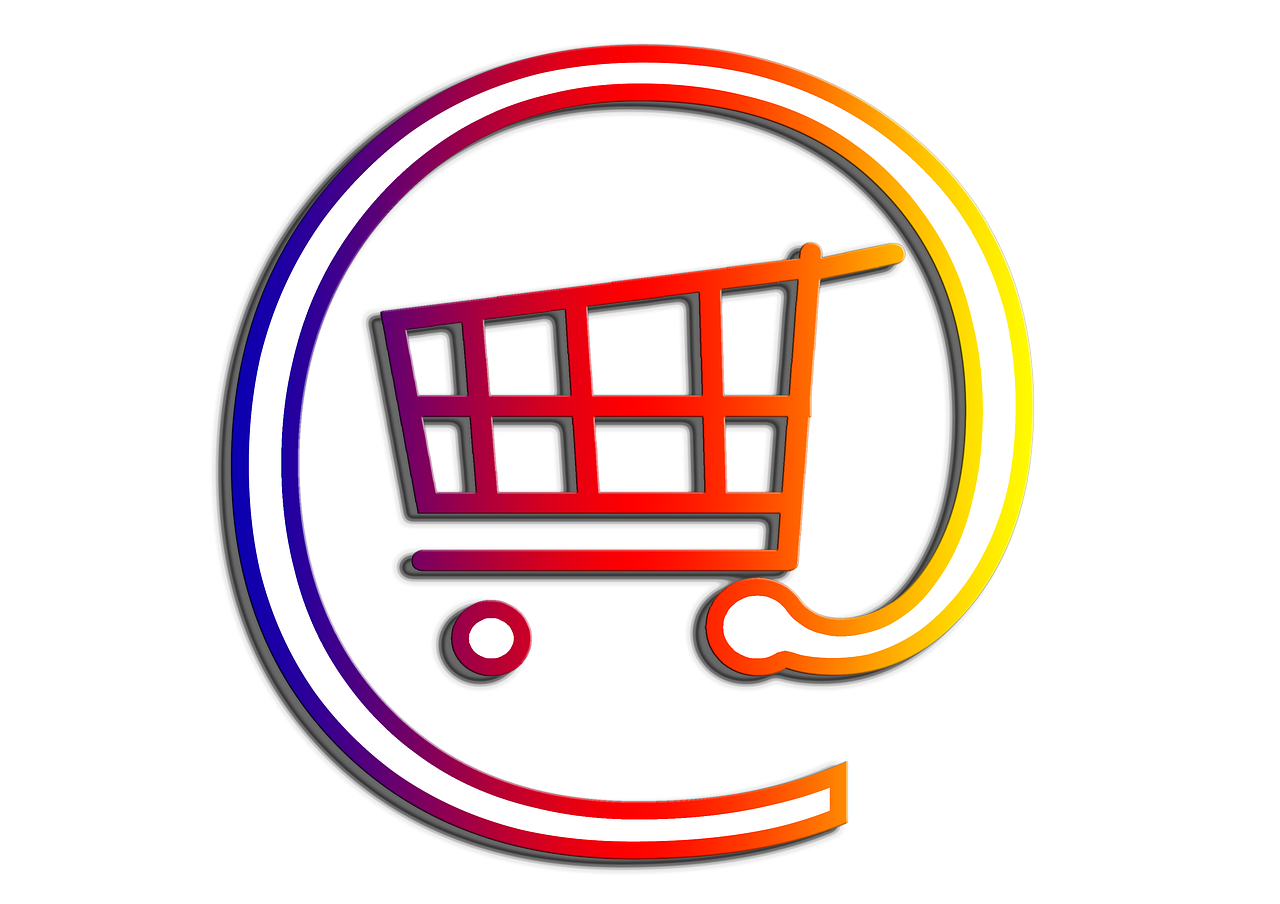In the fast-paced digital marketplace, the triumph or failure of an **online business tech stack** can weave the narrative of your entrepreneurial journey. Imagine this: you’re equipped with cutting-edge tools, seamlessly integrating your website, CRM, project management, and marketing automation systems. Your brand’s voice echoes through polished channels, while data flows like a well-orchestrated symphony, harmonizing efforts across teams and platforms. Doesn’t that sound inviting?
The allure of creating a robust **online business tech stack** is not just in its promise of efficiency; it’s about crafting an ecosystem that amplifies your business’s innate capabilities. As you delve deeper into the intricacies of your tech choices, consider how they affect customer engagement, operational agility, and ultimately, profit margins. Wouldn’t it be amazing if every click, every interaction, transcended into a customer experience that leaves an indelible mark?
But don’t just dream about it—seize the opportunity to elevate your enterprise! Explore how strategic investments in technology can be transformative. Let’s embark on this enlightening journey, dissecting the elements that constitute a potent **online business tech stack**, and discover actionable steps that can propel your venture into uncharted success. It’s time to build, innovate, and claim your space in the digital realm!

Building a Tech Stack for Online Business Success
Understanding the Concept of a Tech Stack
In the realm of online business, the term “tech stack” refers to the amalgamation of technologies, tools, and platforms that collectively facilitate the execution and management of business operations. Think of it as the backbone of your business; it supports various functions—from engaging with customers to processing transactions—and contributes immensely to the overall efficiency and productivity. The components of a tech stack can vary greatly depending on the specific needs of your business, but broadly speaking, they often fall into several categories: front-end technologies, back-end technologies, databases, and cloud services.
The front-end technologies deal with the user interface and experience, effectively the face of your online business. Popular options include JavaScript frameworks like React or Angular, which aid in creating responsive and visually appealing web applications. On the flip side, back-end technologies handle the data and server-side logic. This might involve languages such as Python, Ruby, or PHP, supported by frameworks that streamline development.
Then we have databases, the essential repositories of your business information. Relational databases like MySQL or PostgreSQL, or non-relational alternatives such as MongoDB, manage data storage and retrieval. Cloud services also play a pivotal role in modern tech stacks, offering scalability and flexibility through platforms like AWS, Google Cloud, or Microsoft Azure. Together, these elements form a cohesive tech stack that can evolve as your business grows, allowing for streamlined communication, automation, and overall enhanced performance.
Evaluating Your Specific Business Needs
Identifying your specific business requirements is fundamental in building an effective tech stack. Each online business has unique demands, whether you’re operating an e-commerce platform, a digital service, or content-driven site. To start, you should list core areas of functionality that your business needs to thrive. This often includes customer relationship management (CRM), e-commerce solutions, content management systems (CMS), and marketing automation tools.
For instance, if your primary focus is e-commerce, you’ll want to prioritize a robust platform that not only facilitates transactions but also offers inventory management and customer analytics. Platforms like Shopify or WooCommerce cater specifically to these needs and can be integrated into your tech stack effectively. If you’re a service-based business, a strong CRM system—like Salesforce or HubSpot—would be invaluable for managing client interactions, tracking leads, and automating marketing campaigns.
Additionally, consider the scalability of the tools you choose. Your tech stack should not only serve your current operations but also accommodate future growth. Perhaps you plan to expand your product line or tap into new markets; ensuring that your tech stack supports that vision is crucial. And don’t overlook integration capabilities. The tools and technologies need to work harmoniously with each other. An isolated tech component can create silos of information, resulting in inefficiencies that hamper your operations.
Selecting the Right Tools and Platforms
Choosing the right tools and platforms for your online business tech stack is akin to assembling a puzzle; you want each piece to fit seamlessly together to create a coherent picture of your operations. The market is replete with options, ranging from simple applications to complex enterprise-level solutions. As you navigate these choices, consider both functionality and usability. The ideal tool will not only fulfill a specific function but also be user-friendly, minimizing the learning curve required for your team.
Start with essential components. A reliable website hosting service is paramount. Opt for providers that ensure high uptime, customer support, and security. Once your website is up, consider incorporating a solid CMS like WordPress or Joomla, which simplifies content management. For e-commerce, platforms like Magento or BigCommerce are excellent for handling products, payments, and shipping processes efficiently.
Next comes customer engagement tools. Chatbots, customer feedback tools, and email marketing platforms, such as Mailchimp or Constant Contact, can significantly enhance customer interactions. They not only streamline communication but also provide valuable insights into customer preferences and behaviors.
Moreover, don’t forget about analytics tools. Google Analytics is a standard choice for tracking website performance and user behavior. However, for more in-depth insights, consider specialized tools like Hotjar for heatmaps and user recordings, which can reveal how users interact with your site and where improvements can be made.
Integrating and Automating for Enhanced Efficiency
Once you’ve selected your tools and platforms, the integration process becomes paramount. Seamless integration can create a holistic approach to managing your online business, ensuring that all components of your tech stack communicate effectively with one another. This involves connecting your CMS with e-commerce platforms, linking email marketing software with your CRM, and ensuring your analytics tools can pull data from multiple sources.
Utilizing APIs (Application Programming Interfaces) is often the best way to achieve this seamless integration. APIs allow different software programs to communicate, facilitating the smooth flow of data. For instance, integrating your CRM with your marketing automation tool can help synchronize customer data in real time, leading to more personalized marketing campaigns and improved customer engagement.
Incorporating automation tools can also drastically improve operational efficiency. Tools like Zapier or Integromat automate repetitive tasks by linking different apps and services. For example, you can automate the process of adding new leads into your CRM from your website form submissions, saving time and reducing the potential for human error.
Furthermore, automation can enhance your marketing strategy. Automated email campaigns can be triggered based on user behavior, allowing you to reach out to customers at pivotal moments without manual intervention. Integrating chatbots for customer support can also streamline interactions, providing immediate assistance to visitors and allowing your team to focus on more complex inquiries.
Assessing Performance and Making Adjustments
The digital landscape is perpetually evolving, making it essential to regularly assess the performance of your tech stack. Monitor key performance indicators (KPIs) that align with your business goals. This may include conversion rates, website traffic, customer engagement metrics, and operational efficiencies. Gathering this data will empower you to make informed decisions regarding your tech stack.
Utilize analytics tools to track how effectively each component of your tech stack performs. If certain applications consistently underperform or fail to provide the expected results, it may be time to reevaluate whether they meet your needs. Additionally, gather feedback from your team—it’s often those on the front lines who can identify inefficiencies and suggest improvements.
Adaptability should be a key principle of your tech stack strategy. As your business grows and market trends change, be prepared to pivot and implement new technologies or enhance existing ones. This might involve upgrading your hosting plan to accommodate higher traffic, adopting advanced analytics platforms, or even transitioning to a more versatile CMS.
Regularly benchmarking your tech stack against industry standards can also provide valuable insights. Are your competitors using tools that you overlooked? Keeping an eye on industry innovations may unveil opportunities for improvement that can set you apart from the competition.

Your Ultimate Online Business Tech Stack FAQs
1. What exactly is an online business tech stack?
An online business tech stack is like your digital toolbox! It’s a collection of software, applications, and tools that work together to run your online business smoothly—from your website to your payment processing and everything in between.
2. Why do I need a tech stack for my online business?
You need a tech stack to streamline your operations, improve efficiency, and scale your business. It ensures that all your tools communicate effectively, making it easier for you to manage everything from sales to customer service.
3. What are the essential components of a tech stack?
- Website Builder (like WordPress or Wix)
- E-commerce Platform (like Shopify or WooCommerce)
- Email Marketing Tool (like Mailchimp or ConvertKit)
- Payment Processor (like Stripe or PayPal)
- CRM Software (like HubSpot or Salesforce)
- Analytics Tools (like Google Analytics)
4. Is it okay to start with a basic tech stack?
Absolutely! Starting with a basic tech stack is smart. You can always add more tools as your business grows and your needs change. The key is to ensure that your initial tools integrate well with one another.
5. How do I choose the right tools for my tech stack?
Think about your business goals and what features you need. Read reviews, watch tutorials, and even take advantage of free trials. Don’t hesitate to ask other entrepreneurs for their recommendations or experiences!
6. Can I build a tech stack with free tools?
Yes, you can! There are plenty of free or low-cost tools that can help you get started. However, just be mindful of any limitations compared to paid options, especially when it comes to support and features.
7. What if I choose a tool that doesn’t integrate well with others?
Integration issues can be a headache! If you find yourself in this situation, check if there are third-party tools (like Zapier) that can help bridge the gap or look for alternative tools that work seamlessly together.
8. Should I prioritize automation in my tech stack?
Definitely! Automation can save you a ton of time and ensure tasks run smoothly. Look for tools that offer automation features, particularly in areas like email marketing, social media posting, and customer management.
9. How often should I reevaluate my tech stack?
It’s a good idea to review your tech stack every 6 to 12 months. As your business evolves, you may find new tools that better fit your needs or realize it’s time to upgrade existing software.
10. Where can I find more information about building a tech stack?
There are tons of resources out there! Check out blogs, forums, and webinars dedicated to online business and tech stacks. YouTube is also a goldmine for tutorials and user experiences!
Conclusion
Choosing the right tech stack is crucial for online business success, as it forms the backbone of your operations, ensuring seamless functionality and scalability. From web hosting to e-commerce platforms, every component plays a vital role in enhancing user experience and optimizing performance. By prioritizing tools that integrate well, such as CRM systems, payment gateways, and analytics software, businesses can create a streamlined workflow that supports growth and responsiveness to market demands.
Moreover, staying updated with the latest technologies and trends allows businesses to remain competitive in an ever-evolving digital landscape. Investing time in thorough research and selecting a tech stack that aligns with your specific needs not only saves costs in the long run but also unlocks new opportunities for innovation and customer engagement. Ultimately, a well-architected online business tech stack paves the way for lasting success, enabling entrepreneurs to focus on strategy rather than getting bogged down by technical hurdles. Embrace the power of technology, and let it drive your business forward.
Recommendations
In today’s rapidly evolving digital landscape, aspiring entrepreneurs often find themselves grappling with the intricacies of launching a successful online business. Whether you’re a seasoned marketer or just starting, the challenge of establishing a profitable venture can be daunting. Fortunately, there exists a solution that diminishes these obstacles while unlocking the potential for substantial income generation.
Imagine having the capability to clone a proven 7-figure funnel and seamlessly integrate it into your own enterprise, all without the need for advanced technical skills. This is where the Ambassador Program from John Thornhill comes into play. This innovative program has been meticulously designed to arm you with the tools and resources required to flourish in the burgeoning online business arena.
With the Ambassador Program, you will receive a comprehensive, turnkey evergreen webinar, coupled with a meticulously crafted 4-part workshop aimed at introducing fellow entrepreneurs to this lucrative initiative. The program not only empowers you to generate high-ticket commissions on autopilot but also positions you to tap into a market projected to reach a staggering $1 trillion.
One of the standout features of this program is its user-centric design. It can be set up in less than 30 minutes—ideal for those who wish to hit the ground running without the burden of complex configurations. Additionally, all necessary components are provided: a complete sales funnel, automated email follow-ups, enticing backend offers, and expertly curated traffic sources. For those interested in affiliate marketing, the built-in affiliate program presents an additional revenue stream, allowing you to broaden your income horizons effortlessly.
The Ambassador Program not only simplifies the process of launching an online business but also provides a robust support structure, ultimately paving the way for sustained success. By joining this initiative, you are not merely investing in a product; you are harnessing a transformative opportunity that can redefine your financial future.
If you are ready to elevate your entrepreneurial journey and explore this exceptional opportunity, visit the official website to learn more about the Ambassador Program and witness the remarkable potential that awaits. Take the proactive step towards your online business triumph today!



This article truly highlights some vital points for attaining success in on the internet service! It’s inspiring to see functional ideas that can make a real distinction, especially for those people functioning to develop something sustainable online. I appreciate the emphasis on uniformity and comprehending the target market, as these are usually forgotten yet crucial to long-term development. The suggestions on leveraging digital devices and staying adaptable in a transforming market is spot-on, also. Thanks for sharing these insights; they have actually offered me some brand-new motivation and instructions for my very own online company trip!
This blog post actually highlights some vital factors for accomplishing success in on the internet business! It’s inspiring to see useful pointers that can make a genuine difference, particularly for those of us functioning to construct something sustainable online. I value the emphasis on uniformity and understanding the audience, as these are commonly overlooked yet critical to long-term development. The suggestions on leveraging electronic devices and remaining versatile in a changing market is spot-on, also. Thanks for sharing these insights; they’ve offered me some brand-new inspiration and instructions for my very own online organization trip!
This article truly highlights some crucial points for attaining success in online company! It’s inspiring to see useful ideas that can make a actual distinction, especially for those people working to develop something lasting online. I value the emphasis on consistency and recognizing the target market, as these are often forgotten yet crucial to lasting growth. The suggestions on leveraging electronic devices and staying adaptable in a changing market is spot-on, also. Thanks for sharing these understandings; they have actually offered me some brand-new motivation and instructions for my own online organization journey!
This blog post really highlights some essential points for accomplishing success in on the internet service! It’s inspiring to see useful tips that can make a real distinction, especially for those of us functioning to build something lasting online. I value the focus on consistency and comprehending the audience, as these are typically forgotten yet vital to long-lasting development. The suggestions on leveraging electronic devices and remaining versatile in a transforming market is spot-on, as well. Many thanks for sharing these insights; they’ve offered me some brand-new motivation and instructions for my very own online service journey!
This message really highlights some crucial factors for achieving success in online business! It’s inspiring to see practical tips that can make a actual difference, specifically for those people functioning to construct something sustainable online. I appreciate the focus on uniformity and comprehending the target market, as these are usually ignored yet important to lasting growth. The advice on leveraging electronic devices and remaining versatile in a changing market is spot-on, also. Many thanks for sharing these understandings; they’ve provided me some brand-new motivation and direction for my very own online company trip!
This article truly highlights some important factors for achieving success in online service! It’s inspiring to see practical pointers that can make a actual difference, especially for those people working to develop something lasting online. I appreciate the emphasis on consistency and comprehending the audience, as these are frequently forgotten yet vital to long-lasting growth. The suggestions on leveraging digital devices and staying adaptable in a altering market is spot-on, also. Many thanks for sharing these understandings; they’ve provided me some new motivation and instructions for my very own online company trip!
This post really highlights some necessary points for accomplishing success in online company! It’s motivating to see sensible suggestions that can make a genuine difference, especially for those of us working to construct something sustainable online. I value the emphasis on consistency and recognizing the audience, as these are commonly ignored yet important to lasting development. The recommendations on leveraging digital tools and remaining adaptable in a transforming market is spot-on, as well. Thanks for sharing these understandings; they’ve offered me some brand-new inspiration and instructions for my own online service trip!